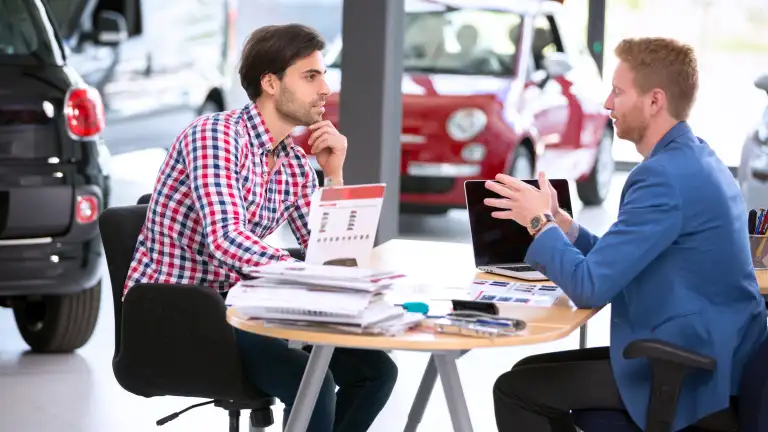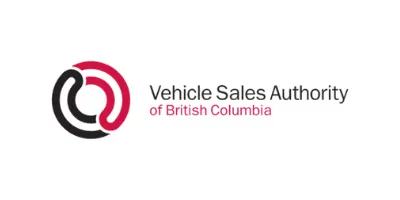
When the lease ends, do I have the right to buy the car I've been leasing?
Leasing a vehicle can be an attractive alternative to buying one. It can offer the chance to drive a higher-priced, better-equipped car. But before signing the lease, be aware of some considerations that may be hidden in the fine print.
What you should know
A lease is essentially an agreement to rent a vehicle for a long term. When you lease a vehicle, you pay to use the vehicle over a set period of time, typically three to five years.
The advantages of leasing
On the surface, leasing can be more appealing than buying. Your monthly lease payments are typically much lower than the monthly payments on a car loan. Then, after enjoying the most trouble-free span of the vehicle’s life, you bring it back to the dealership and get another new one.
And there are other advantages to leasing:
there’s often no down payment required when leasing, or only a low one
taxes may be lower because they're based on monthly payments (rather than the purchase price)
you’re always driving a late-model vehicle that’s usually covered by the manufacturer’s warranty
The disadvantages of leasing
But there are drawbacks of leasing, too.
One is that the dealer owns the vehicle, not you. This means the dealer may restrict who can drive it.
You may also have to follow — and pay for — a set maintenance schedule.
And at the end of the lease, you haven’t built up equity in the vehicle the way you would have if you'd bought. The result is that leasing typically costs you more than borrowing money to buy a vehicle.
In deciding whether to lease or buy a vehicle, it helps to fully consider how the two options compare.
| Leasing | Buying | |
|---|---|---|
| Ownership | You don't own the vehicle. You get to use it but you have to return it at the end of the lease unless you decide to buy it. | You own the vehicle and get to keep it as long as you want it. |
| Monthly payments | Lease payments are almost always lower than loan payments. That’s because you're paying only for the vehicle's depreciation during the lease (its drop in value), plus interest and other finance charges, taxes, and fees. | Loan payments are usually higher than lease payments. That’s because you're paying off the entire purchase price of the vehicle, plus interest and other finance charges, taxes, and fees. |
| Early termination | If you end the lease early, penalty charges can be almost as costly as continuing with the lease. | You can sell or trade in your vehicle at any time. |
| Mileage | Most leases limit the distance you can travel, typically 20,000 to 25,000 kms per year. You’re charged for exceeding your limits. | You're free to drive as many kilometres as you want. |
| Excessive wear and tear | You must maintain the vehicle in good condition, or you’ll have to pay excess wear-and-tear charges when you return it. | You don't have to worry about wear and tear (though it could lower the vehicle's trade-in or resale value). |
| At the end of term | At the end of the lease (typically three to five years), you'll have to finance the purchase of the vehicle or lease or buy another. | At the end of the loan term (typically four to five years), you have no further payments and you’ve partly paid off the vehicle. |
Two types of leases are common: a straight lease and a lease with an option to purchase.
In a straight lease, you return the vehicle when the lease is over.
In a lease with an option to purchase, you can buy the vehicle at the end of the lease. The option-to-purchase lease can be either open or closed. In a closed lease, you pay an amount agreed on at the outset to buy the vehicle at the end of the lease.
In an open lease, you might have to pay more when the lease ends. At the beginning of the lease, the dealer estimates the vehicle’s value at the end of the lease, also known as its residual value. Monthly payments are based on that estimate. If at the end of the lease the vehicle is worth less than the residual value, you’ll have to cover the difference.
Under BC law, when you lease a vehicle, the dealer must disclose in writing the following information before you agree to a lease:
a summary of costs and credits for any extended warranty due when you sign the lease
all express warranties and guarantees for the vehicle made by the manufacturer or dealer
who is responsible for maintaining and servicing the vehicle
a description of any insurance, including types and amounts of coverage, that you must provide and pay for
any limit on your use of the vehicle, including who can drive it and any requirement to get permission to take the vehicle outside of BC
the amount of tax you're paying in every payment
the cooling-off period (explained below)
You have one business day, after the day you sign the lease, to change your mind and cancel it for a full refund. During this “clear day” cooling-off period, the dealer keeps the vehicle. Some days don’t count as part of the cooling-off period: statutory holidays, Sundays, and days the dealership is closed.
Calculating the cooling-off period
The law calls the cooling-off period after you sign a vehicle lease one “clear day.” This means that after you sign the lease, you have until the end of the next business day to change your mind. For example, if you sign a lease on Tuesday and change your mind, you must notify the dealer of your decision to cancel by the end of the day on Wednesday. While you technically have until 11:59 pm to cancel, it’s better to notify the dealer during business hours so the dealer can give written confirmation that your contract has been cancelled. If you choose to cancel after business hours, make sure you have proof that notice was given before midnight.
If you're sure you don't want a cooling-off period, you can waive (give up) your right to it. You must do that in writing.
How to prevent problems
When you lease a vehicle, just as when you buy one, its cost is negotiable and based on a variety of factors. Here are some questions to keep in mind or ask the dealer as you negotiate the lease.
| Topic | Questions to ask |
|---|---|
| Ownership | What would be the total cost to buy the same vehicle and finance the purchase instead? |
| Monthly payments | What is the total financial obligation of the lease, including the cost of all lease payments, plus all taxes, fees, and any down payments? |
| Early termination | Can I terminate the lease before the end date and are there penalties or additional charges if I do? |
| Mileage | How is extra mileage defined and how much will I have to pay per kilometre? |
| Excesive wear and tear | What is excessive wear and tear that will make me liable for expenses at the end of the lease? |
| At the end of the term | Is there an option to buy the vehicle at the end of the lease? |
Leasing a car can seem like the cheaper option as compared to buying: monthly lease payments are typically lower than financing payments. But interest charges are usually higher on a lease. And at the end of the lease, you haven’t built up any equity. Take the time to calculate the full costs involved in leasing versus buying.
A tool to help you run the numbers
The federal government's vehicle lease or buy calculator lets you compare the relative costs of leasing and buying. It also offers tips for financing a vehicle.
Before you sign the lease, make sure you read and understand everything on the page. Have terms you don't understand explained to you.
Common questions
If you don’t make your vehicle lease payments, the dealer may take the vehicle back (seize it) or sue you in court for the balance owing on the lease.
Sometimes the dealer can do both. If the lease is seen to be a true lease, the dealer can seize the vehicle and sue you. If the lease is seen to be a security lease, the dealer must decide whether to seize the vehicle or sue. The courts have been developing tests that distinguish between these two types of lease. It’s best to get legal advice on how your lease might be characterized.
At the end of the lease, you have to return the vehicle to the dealer unless you have an option to buy it. The dealer will inspect the vehicle to make sure it’s safe to drive.
Depending on the type of lease you have, you may owe additional money. If it’s open lease, the dealer will have estimated the vehicle’s residual value at the end of the lease. When the lease ends, if the vehicle is worth less than the residual value, you’ll have to pay the difference.
If you have an option to buy the vehicle and you choose to buy it, it’s best to have the vehicle inspected. Under BC law, all dealers are required to make sure all leased vehicles meet certain safety standards before they sell them. Even so, to have a full picture of the vehicle's condition, it’s best to have it inspected prior to sale — even if the sale is to you. Who pays for this inspection — the dealer or you — depends on what the lease agreement says.
Who can help

Vehicle Sales Authority of BC
Oversees retail car sales and helps resolve complaints with licensed car dealers.

